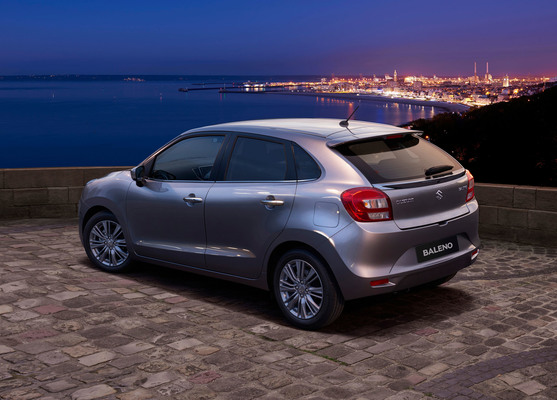
By Alistair Kennedy
The new Baleno comes in two specification levels – GL and GLX. GL is priced at $16,990 with manual gearbox and $17,990 in automatic mode.
There’s a healthy $5000 extra for the auto-only GLX that adds a more fuel-efficient engine, LED headlights, alloy wheels, foglights, push-button start, digital climate control, rear disc brakes, steering wheel reach adjustment, and gear shift paddles.
Baleno GL and Swift share engines and transmissions but Baleno does have one point of distinction in that its GLX variant is powered by a modern three-cylinder 1.0-litre turbo-petrol engine of the type that is popular in European cars.
GL has the choice of five-speed manual or four-speed automatic; GLX is six-speed auto only.
Baleno’s designers have ensured that maximum use is made of its larger external dimensions and it really does feel like a larger vehicle inside.
By reducing door liner intrusion into the front seats they’ve been able to increase front seat shoulder room and there’s enough rear knee and legroom to allow two adults to travel in relative comfort.
Boot space is an impressive 355 litres which can be expanded to 756 litres with the rear seatbacks folded and even more through removable side trims that increase the lateral dimensions.
Baleno GL’s steering wheel can only be adjusted for height, GLX also gets reach adjustment.
Display is through a seven-inch colour touchscreen located in the middle of the dashboard and split into four components that can be set to each driver’s preference with a choice of six different set-ups.
Our only problem with the touchscreen was that the audio volume control is a vertical touch slider located on the left of the screen that needs to be tapped continuously and so causes far too much driver inattention. Fortunately there is a steering wheel volume control.
Bluetooth pairing is simple and intuitive and we were tuned in within a minute. There are smartphone interfaces with ApplePlay and MirrorLink, the latter an independent, non-proprietary system that caters for Android phones.
As is the growing trend there’s no CD player.
Satellite navigation is standard on both Baleno variants.
Standard safety equipment includes six airbags, ABS brakes with brake assist and electronic brakeforce distribution, electronic stability program, hill hold assist, reversing camera, daytime running lights, and twin IsoFix child seat anchor points.
The latest Baleno has a new, lighter and stronger platform that makes use of a number of extra-high-tensile materials adding structural rigidity and therefore occupant safety.
Our test car was the 1.0-litre BoosterJet auto. We’d like to have seen a manual version but commercial reality ensured that it wouldn’t be viable in auto-centric Australia.
There is some turbo lag at low revs but once past that the little Suzuki is a delightful little car to drive, almost living up to its engine’s name.
Around town its small dimensions made it easy to slip through traffic and to park while it cruised comfortably on the motorway segment of our test.
Its light weight (975 kg) and strong platform provides an excellent power-to-weight ratio for ride and handling that’s right up with the best in the segment.
Fuel consumption during our week in the Baleno averaged out at 5.9 litres per 100 kilometres, not that far above the listed 5.2 L/100km.
To arrange a test drive contact Berwick Suzuki, 2-12 Clyde Road, Berwick. Phone 9709 1900.
Model range
GL 1.4-litre petrol five-door hatch: $16,990 (manual), $17,990 (automatic)
GLX 1.0-litre turbo-petrol five-door hatch: $22,990 (automatic)









